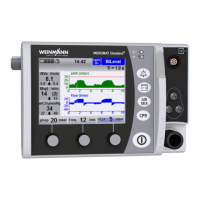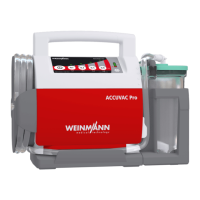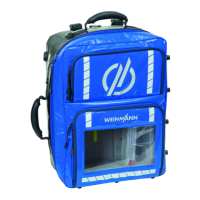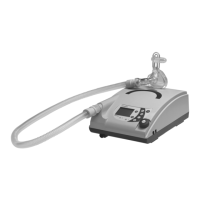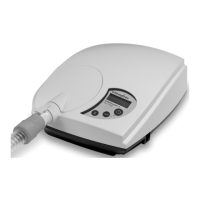18 EN MEDUVENT Standard
WM 67851 01/2021
2 Safety
Risk of infection resulting from use of a contaminated device
for subsequent ventilation procedures!
If the device is used in a contaminated environment, the patient
might suffer serious or life-threatening injury.
If you suspect that the interior of the device has been
contaminated, take the device out of service and contact the
manufacturer.
Increased spontaneous breathing resistance and reduced
ventilation performance resulting from blocked intake
opening/blocked hygiene filter!
A blocked intake opening/blocked hygiene filter will reduce
ventilation performance in operation, and in the event of device
failure will result in increased spontaneous breathing resistance.
This might injure the patient.
Do not conceal or block the intake opening/hygiene filter.
Hazardous therapy due to lack of monitoring of the oxygen
concentration administered!
The device does not monitor inspiratory oxygen concentration in
the same way as an RGM (respiratory gas monitor), and has no
corresponding alarm. Dispensing respiratory gas with a slightly
different oxygen concentration might put the therapy at risk. This
might injure the patient.
Use a separate respiratory gas monitor to monitor the oxygen
concentration administered to the patient.
Inadequate oxygen concentration due to leaks during
ventilation!
Leaks during ventilation may lead to the concentration of oxygen
administered in the respiratory gas being reduced. This might
injure the patient.
Check that the mask or tracheal tube is correctly positioned.
Note measured value O
2
i for assessing ventilation. Also correct
oxygen supply if necessary.
Use suitable external patient monitoring methods.

